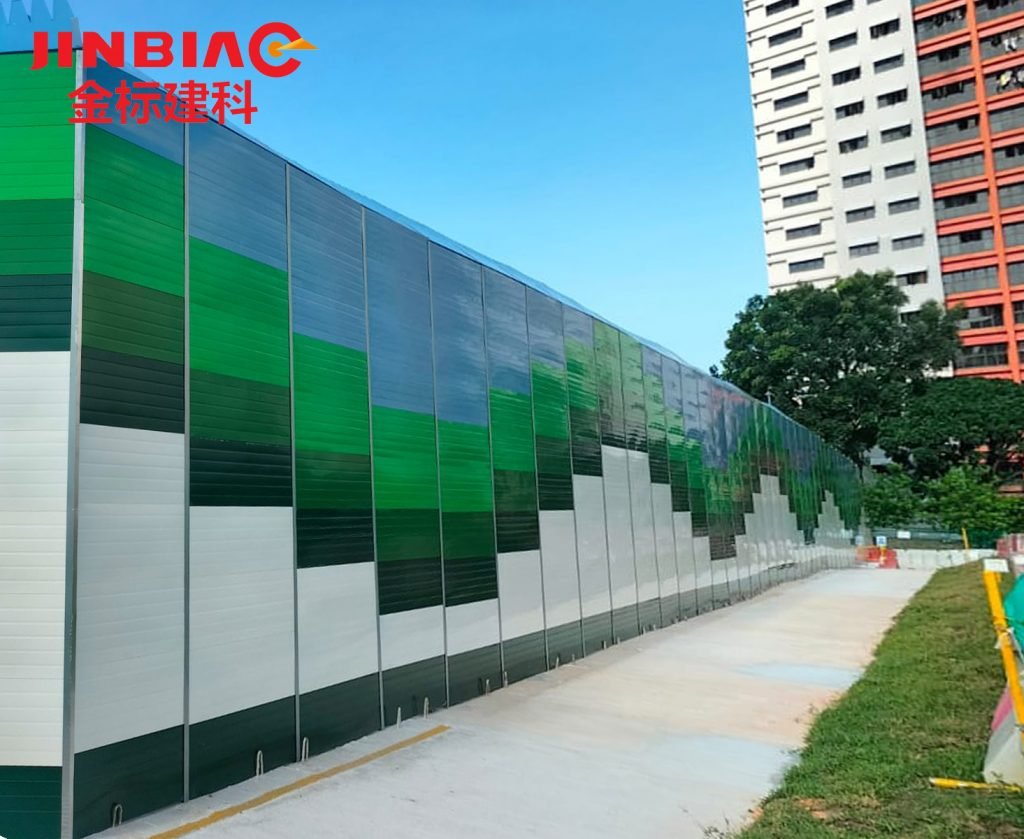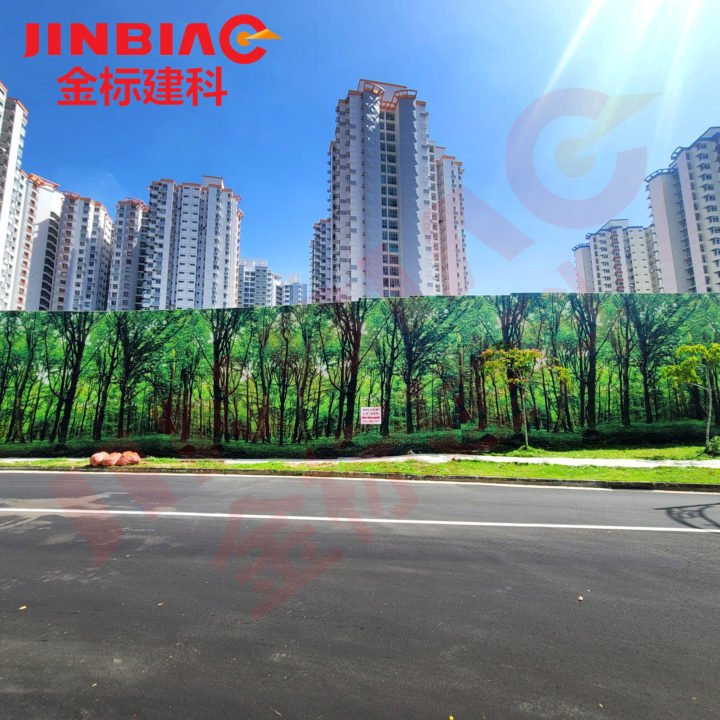
Construction sites are often accompanied by a symphony of heavy machinery, clattering tools, and general industrial cacophony that can disturb the peace in the surrounding areas.
To mitigate this noise pollution, noise barriers have become an integral part of construction projects, benefiting both the site’s immediate environment and the project’s compliance with local regulations on noise control. However, installing noise barriers is just the beginning.
Maintaining them is important to ensure they continue functioning optimally. Noise barriers, though sturdy in their construction, are not invulnerable to wear and tear over time. Just like any other element of a construction site, they require regular attention and maintenance to continue serving their purpose.
The Importance of Maintenance
Regular maintenance of a noise barrier in construction is essential to maintain the acoustic performance and structural integrity that they were designed for. A damaged or deteriorated noise barrier not only fails to reduce noise effectively but can also pose safety hazards.
Additionally, maintaining noise barriers in good condition is a sign of a well-managed construction project, communicating professionalism and compliance with environmental standards to the community.
Regular Inspection
Preventive maintenance through regular inspection is a fundamental pillar of noise barrier upkeep. In this section, we’ll discuss how to set up an inspection schedule and provide a checklist of items to look for to ensure your noise barriers are in top form.
Inspection Schedule
Create a routine schedule for inspection, which can be based on factors such as the barrier’s age, environmental exposure, and intensity of construction activities. Quarterly or bi-annual inspections are generally recommended, with additional checks after severe weather events or when significant changes occur on-site.
Visual Inspection Checklist
During visual inspections observe for the following:
- Structural Integrity: Are there any visible cracks, dents, or signs of warping that could compromise the barrier’s stability?
- Anchorage Systems: Ensure all bolts, braces, and other fasteners are present and secure.
- Surface Integrity: Check for any signs of peeling, chipping, or fading in the noise barrier’s surface.
- Vegetation Growth: Any plants growing on or near the noise barrier can impact its effectiveness and should be addressed promptly.
Cleaning Procedures
Maintaining the cleanliness of noise barriers is not only for aesthetics but also for ensuring unhindered noise reduction. This section covers the recommended cleaning agents and the best methods to clean your noise barriers.
Recommended Cleaning Agents
Mild, non-abrasive cleaning solutions such as soapy water, diluted vinegar, or specialised barrier-cleaning solutions are ideal. Avoid using harsh chemicals that can damage the barrier’s surface or affect any noise-absorbing materials inside.
Cleaning Methods
- Start by rinsing the barrier with water to remove loose debris.
- Use a soft brush or sponge to apply the cleaning solution, working from top to bottom to avoid streaking.
- Rinse the barrier thoroughly with clean water.
- Allow the barrier to dry completely before conducting any repairs or maintenance activities.
Repair and Maintenance
When damage is identified, swift repairs are necessary to prevent further degradation. In this section, we’ll address common types of damage and how to repair them effectively.
Types of Damage
- Surface Damage: Includes scratches, chips, and flaking paint. These can be repaired using touch-up paint or by applying a new coating, depending on the extent of the damage.
- Structural Damage: More severe, including cracks or breaks in the barrier’s structure. These require immediate attention and may necessitate the services of a professional technician.
Conducting Repairs
- Use epoxy or sealants specifically designed for outdoor use to repair cracks and holes in the barrier’s structure.
- When dealing with noise-absorbing materials, ensure replacements are of the same type and density to maintain acoustic performance.
- Regularly monitor repaired areas to confirm the effectiveness of the repair and to catch any secondary damage early.
Seasonal Considerations
Weather patterns influence the wear and tear of noise barriers, with different seasons requiring varied maintenance approaches. This section provides tips for maintaining barriers in different weather conditions.
Winter
- Remove snow and ice accumulations that can add excessive weight and potentially cause the barrier to collapse.
- Avoid using de-icing salts near the barrier as they could corrode metal components.
- Check frequently for frost heaves or soil shifts that may destabilise the barrier.
Summer
- Protect the barrier from prolonged sun exposure, which can cause fading and heat-related damage.
- Regularly water trees and shrubs near the barrier to prevent root systems from undermining their base.
- Conduct additional inspections after severe storms to ensure the barrier is not damaged by wind or flying debris.
Proactive Measures
Preventing damage is often more manageable and cost-effective than repairing it. Here, we’ll discuss strategies for avoiding premature noise barrier wear and tear.
Protective Enclosures
Installing enclosures around the noise barriers can prevent accidental damage from heavy equipment and on-site activities. Make sure these enclosures allow for ventilation and avoid potential corrosion traps.
Hazard Awareness
Educate construction crews about the importance of noise barrier protection and the potential hazards associated with damage to the barriers. Implement clear protocols for working in close proximity to the barriers.
Environmental Mitigation
Consider the environmental impact and exposure of noise barriers. For example, operations that involve dust or airborne particles should be situated to minimise the level of contaminants reaching the barriers.
Conclusion
The effective performance of noise barrier construction is not indefinite, but with proper maintenance, their service life can be significantly extended. Regular checks, diligent cleaning, rapid repairs, and strategic proactive measures all play a part in keeping noise barriers in top condition.
Following these maintenance tips, construction firms can ensure their noise barriers continue to provide a quieter, safer environment for their projects and the surrounding community.
Hebei Jinbiao is a leading company in Noise Barrier products and Fencing products in Singapore. We guarantee to provide you with the most high-quality Sound Barrier and Fencing products along with our dedicated assistance. Do not hesitate to contact us. We are looking forward to helping you solve your noise issues, safety issues and protecting you from noise pollution as well as ensuring your safety.

